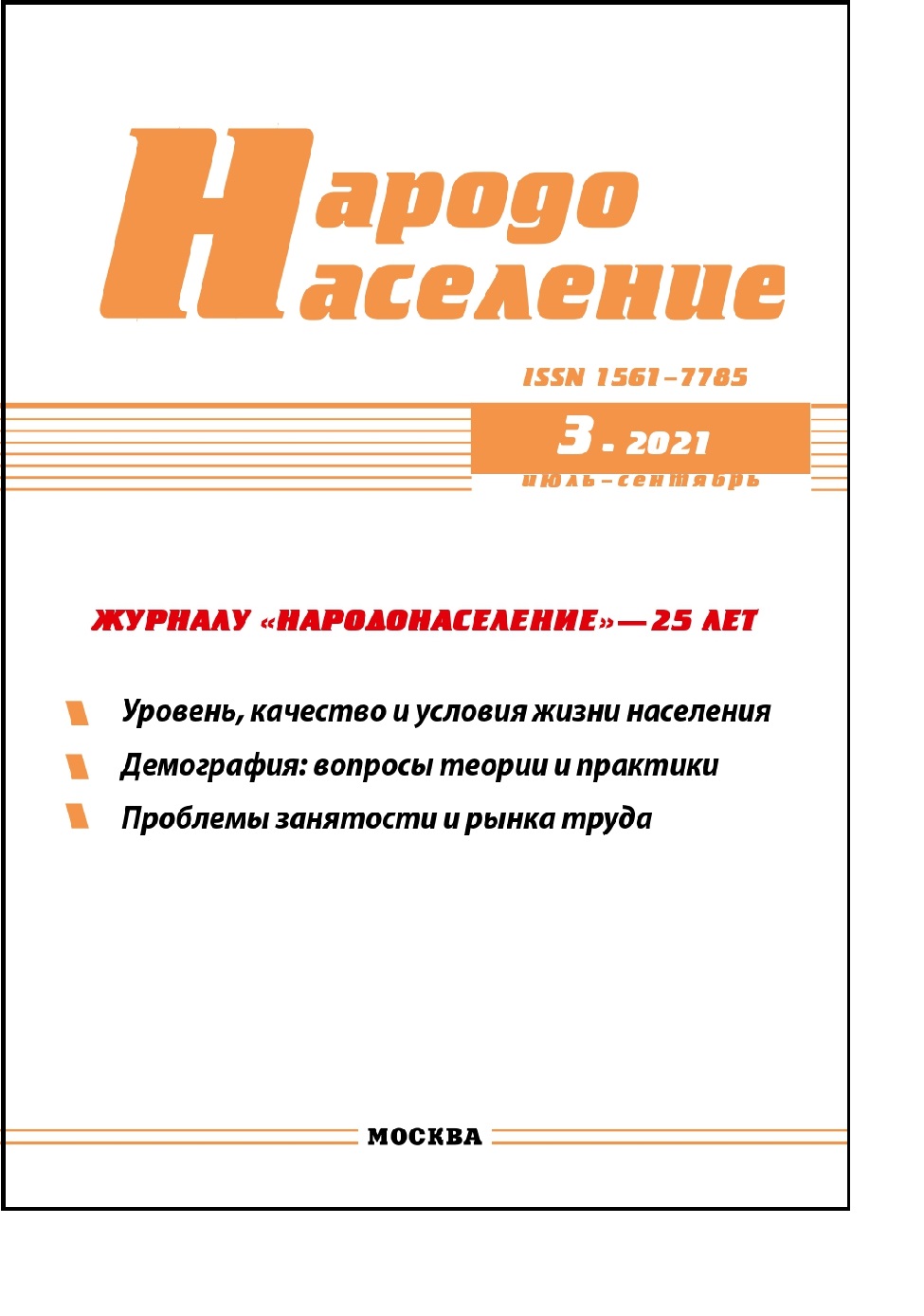Заработная плата в России в 2015-2021 годах
Научная статья
Выражение признательности
Исследование выполнено в соответствии с планом НИР ИСЭПН ФНИСЦ РАН
Для цитирования
Мигранова Л. А. Заработная плата в России в 2015-2021 годах // Народонаселение. 2021. Том 24. № 3. С. 175-190. DOI: https://doi.org/10.19181/population.2021.24.3.14
Аннотация
В статье представлен анализ динамики заработной платы в России в 2015-2020 гг. и в первой половине 2021 года. В 2018 г. Росстат изменил методологию расчёта отдельных статей Баланса денежных доходов и расходов населения. Это касалось и статьи оплата труда, из которой были исключены скрытая (официально не учтённая) заработная плата и прочие денежные поступления, а также выделен фонд оплаты труда работников организаций. Кроме того, Росстат разработал методику оценки средней заработной платы всех наёмных работников (организаций, работающих у индивидуальных предпринимателей, фермеров и физических лиц) и опубликовал результаты за 2015-2021 гг. В статье представлена также оценка автора средней заработной платы работающих у индивидуальных предпринимателей, фермеров и физических лиц за 2018-2021 гг. Средняя заработная плата этой категории работающих в 2020 г. составляла 72,9% от средней заработной платы всех наёмных работников и 60,2% от зарплаты работников организаций. В виду отсутствия официальных данных о дифференциации заработной платы всех наёмных работников в статье представлены два варианта её оценки за 2017-2019 гг. с использованием первичных данных Выборочных наблюдений доходов населения (ВНДН). В 2019 г. коэффициент фондов по разным алгоритмам расчёта составлял 18,5 и 15,7 раза против 13 раз среди работников организаций. Представлен анализ влияния МРОТ на уровень и дифференциацию заработной платы.
Ключевые слова:
наёмные работники, уровень и дифференциация заработной платы, минимальная оплата труда, выборочные обследования Росстата
Литература
1. Заработная плата в России: эволюция и дифференциация. - Москва: ГУ ВШЭ, 2007. - 575 с. ISBN 978-5-7598-0551-9.
2. Мигранова, Л. А. Минимальный социальный стандарт уровня жизни в России: методы оценки / Л. А. Мигранова, И. И. Корчагина // Уровень жизни населения регионов России. - 2021. - Т. 17. - № 2. - С. 192-203. DOI: 10.19181/lsprr.2021.17.2.3.
3. Рабкина, Н. Е. Основы дифференциации заработной платы и доходов населения / Н. Е. Рабкина, Н. М. Римашевская. - Москва: Экономика, 1972. - 288 с.
4. Токсанбаева, М. С. Заработная плата: минимальный размер и дифференциация / М. С. Токсанбаева // Народонаселение. - 2020. - Т. 23. - № 4. - С. 40-49. DOI: 10.19181/population.2020.23.4.4.
5. Система экономико-математических моделей для анализа и прогноза уровня жизни / под ред. Н. П. Федоренко и Н. М. Римашевской. - Москва: Наука, 1986. - 262 с.
6. Мигранова, Л. А. Методы оценки уровня и дифференциации доходов населения / Л. А. Мигранова, В. С. Жаромский // Народонаселение. - 2020. - Т. 23 - № 4. - С. 26-39. DOI: 10.19181/population.2020.23.4.3.
7. Заработная плата в мире в 2016-2017 гг. Неравенство в оплате труда на предприятиях. - Москва: МОТ, 2017. - 164 с.
2. Мигранова, Л. А. Минимальный социальный стандарт уровня жизни в России: методы оценки / Л. А. Мигранова, И. И. Корчагина // Уровень жизни населения регионов России. - 2021. - Т. 17. - № 2. - С. 192-203. DOI: 10.19181/lsprr.2021.17.2.3.
3. Рабкина, Н. Е. Основы дифференциации заработной платы и доходов населения / Н. Е. Рабкина, Н. М. Римашевская. - Москва: Экономика, 1972. - 288 с.
4. Токсанбаева, М. С. Заработная плата: минимальный размер и дифференциация / М. С. Токсанбаева // Народонаселение. - 2020. - Т. 23. - № 4. - С. 40-49. DOI: 10.19181/population.2020.23.4.4.
5. Система экономико-математических моделей для анализа и прогноза уровня жизни / под ред. Н. П. Федоренко и Н. М. Римашевской. - Москва: Наука, 1986. - 262 с.
6. Мигранова, Л. А. Методы оценки уровня и дифференциации доходов населения / Л. А. Мигранова, В. С. Жаромский // Народонаселение. - 2020. - Т. 23 - № 4. - С. 26-39. DOI: 10.19181/population.2020.23.4.3.
7. Заработная плата в мире в 2016-2017 гг. Неравенство в оплате труда на предприятиях. - Москва: МОТ, 2017. - 164 с.
Статья
Поступила: 30.05.2021
Опубликована: 22.09.2021
Форматы цитирования
Другие форматы цитирования:
APA
Мигранова, Л. А. (2021). Заработная плата в России в 2015-2021 годах. Народонаселение, 24(3), 175-190. https://doi.org/10.19181/population.2021.24.3.14
Раздел
ПРОБЛЕМЫ ЗАНЯТОСТИ И РЫНКА ТРУДА








